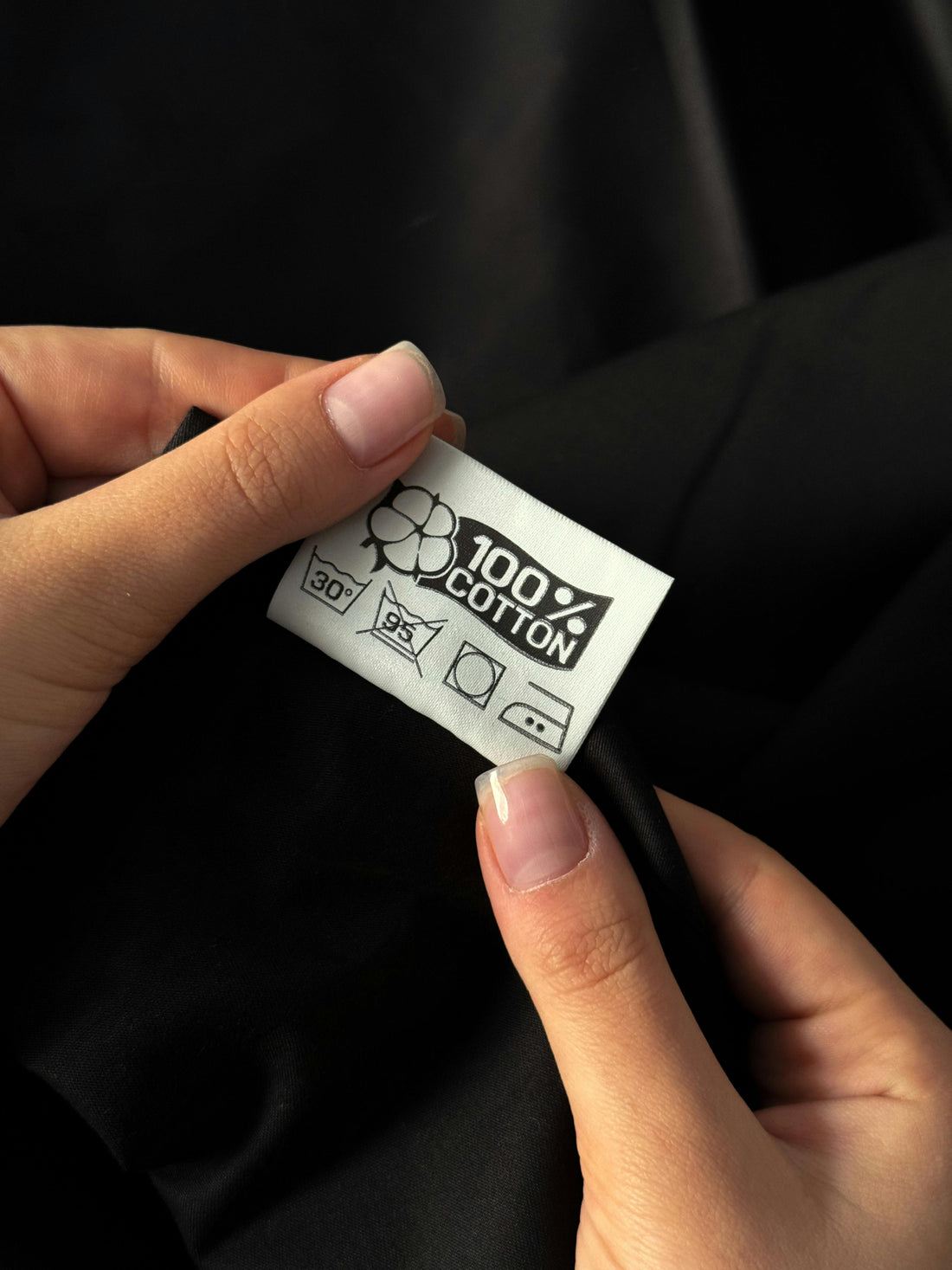
How to Read and Understand Clothing Care Labels: A Complete Guide
Clothing care labels might be small, but they hold the secret to making your garments last longer. These tiny tags are packed with information in the form of words, symbols, and numbers that explain exactly how to wash, dry, and store your clothes so they stay fresh and in good condition.
If you have ever shrunk your favorite sweater or faded a silk blouse, you know how costly it can be to ignore a care label. Learning to read and follow these instructions will help you extend the life of your clothes, save money, and reduce your environmental footprint by keeping your wardrobe in rotation for longer.
A Short History of Clothing Care Labels
Care labels as we know them today are a relatively recent invention. Before the mid-20th century, most clothing care instructions were passed down verbally or printed on packaging, which meant they were lost once the garment was purchased. In the 1950s and 1960s, as synthetic fabrics like polyester became popular and home washing machines became common, manufacturers began sewing tags into garments to guide proper cleaning.
The biggest shift came in the 1970s when the International Organization for Standardization (ISO) and various textile industry groups created a universal set of laundry care symbols. These symbols removed the need for lengthy text instructions and made it possible for people in any country to understand how to care for their clothes without translation.
Today, care tags are required by law in many countries, including the United States, the UK, and across the European Union. They are not just helpful — they are part of a global standard that helps protect clothing investments and reduce waste.
Decoding Washing Symbols
The bucket of water symbol is your guide to washing. The details inside or beneath it tell you exactly how to treat your garment.
- Numbers inside the bucket: Maximum water temperature in °C (for example, “40” means 40°C).
- One line underneath: Gentle cycle.
- Two lines underneath: Very delicate cycle.
- Hand symbol: Hand wash only, usually in cool water.
- Crossed-out bucket: Do not wash with water, dry clean instead.
Tip: Washing at lower temperatures can protect your clothes and reduce energy use.
Bleaching Guidelines
The triangle symbol shows whether bleach is safe to use.
- Plain triangle: Any bleach is fine.
- Triangle with diagonal lines: Only non-chlorine bleach allowed.
-
Crossed-out triangle: Do not use bleach at all.
Tip: Even when bleach is allowed, using it sparingly will help preserve fibers and color. When in doubt, skip the bleach and go for natural stain removers like vinegar.
Drying Instructions
The square with a circle symbol is for tumble drying, with the dots inside showing the recommended heat setting.
- One dot: Low heat for delicates and synthetics.
- Two dots: Medium heat for everyday fabrics.
- Three dots: High heat for sturdy fabrics like towels.
- Line under square: Gentle tumble cycle.
- Crossed-out symbol: No tumble drying, air dry instead.
- Vertical lines in square: Line dry.
- Horizontal line in square: Lay flat to dry.
Tip: Air drying reduces shrinkage and helps preserve elastic fibers.
Ironing Symbols
The iron icon is simple to recognize, but the dots inside determine the safe heat setting.
- One dot: Low heat for synthetics and delicate fabrics.
- Two dots: Medium heat for cotton blends.
- Three dots: High heat for linen and pure cotton.
- Steam lines under iron: Safe for steam ironing.
- Crossed-out iron: Do not iron.
Tip: Iron inside-out to protect prints and delicate surfaces.
Dry Cleaning Details
The circle symbol is for professional dry cleaning.
- Letter “P” or “F”: Indicates which solvent to use (information for cleaners).
- Crossed-out circle: Do not dry clean.
- Plain circle: Dry clean only.
Pro Tips for Clothing Care
Even without a label, you can still protect your clothes with some simple checks.
- Check fabric type: Similar fabrics usually share care needs.
- Spot test stain removers: Test on a hidden area first to avoid visible damage.
- Store carefully: Keep clothes in a cool, dry place away from sunlight.
- When unsure: Hand wash in cold water and hang dry.
- Wash less often: You don’t have to wash a garment every time it’s worn. Spot clean when possible to avoid unnecessary wear.
The Benefit of Reading Care Labels
Once you learn these symbols, laundry becomes less about guessing and more about following a straightforward checklist. You will protect your favorite pieces, spend less replacing damaged clothing, and help reduce textile waste. Your clothes will look better for longer, which is better for your wardrobe and the planet.
